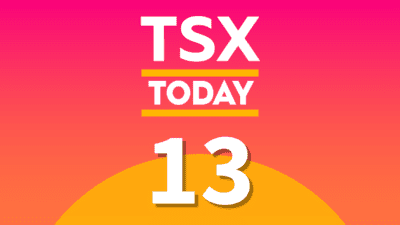Grocers are set to experience a challenging year in 2018 with the rise of Amazon.com, Inc. as a competitor and the Ontario minimum wage hike. In September, I’d covered rising food prices in Canada and whether or not this could give a boost to suppliers like Saputo Inc.
Researchers at Dalhousie University and the University of Guelph recently released Canada’s Food Price Report. The report projected that the annual food bill for a Canadian family would rise by $348 in 2018. Food inflation is expected to rise between 1% and 3%. However, much of the rise will be due to more Canadians eating at restaurants or eating prepared food. Vegetables are projected to experience the largest increase of the food groups — a rise in price between 4% and 6% in 2018.
Let’s take a look at two food companies and pick one to add to our portfolios in 2018.
Maple Leaf Foods Inc. (TSX:MFI)
Maple Leaf Foods is a Toronto-based packaged meats company. Shares of Maple Leaf Foods have increased 28.8% in 2017 as of close on December 20. Canada’s Food Price Report projected that meats would experience overall price inflation from zero to 2% in 2018.
Maple Leaf Foods released its third-quarter results on October 26. Sales jumped 6.6% to $908.4 million, and net earnings increased 18.2% to $37.6 million. Maple Leaf Foods benefited from the February acquisition of the vegetarian and meat substitute company, LightLife. It also reported a 5.2% rise in free cash flow to $154.3 million.
The board of directors approved a quarterly dividend of $0.11 per share, representing a 1.2% dividend yield at offering.
High Liner Foods Inc. (TSX:HLF)
High Liner Foods is a seafood company that packages and distributes product to restaurants and other entities. Its stock has dropped 25.1% in 2017. Seafood prices are also expected to rise between zero and 2% in 2018. In this respect, there is no distinct advantage between the two companies when comparing overall food price inflation.
High Liner Foods released its third-quarter results on November 9. The company reported solid growth as a result of its acquisition of Rubicon Resources LLC in May, allowing it to diversify its seafood offerings. In the third-quarter sales rose to $282.7 million compared to $230.4 million in the prior year. The company reported gross profit of $48.3 million, which represented a $2.3 million increase from Q3 2016.
The company incurred $2.7 million in additional net losses from a second-quarter recall. Adjusted net income was still down to $8.4 million from $8.9 million in the prior year. High Liner Foods posted a quarterly dividend of $0.14 per share, representing a 3.9% dividend yield.
Which is the better buy for 2018?
High Liner Foods aims to improve its manufacturing facilities in 2018, while also focusing on strategic objectives to boost financial performance. Shares have climbed 10.4% in a three-month span as of December 20, as the company appears to have shed poor investor sentiment following its recall.
Still, the performance at Maple Leaf Foods is difficult to overlook in making this comparison. Its foray into vegetarian and vegan alternatives is a fantastic move considering consumer trends for younger demographics. I like Maple Leaf Foods stock over High Liner Foods in 2018.








